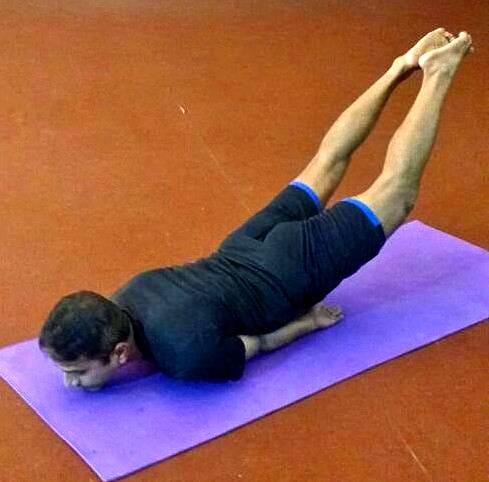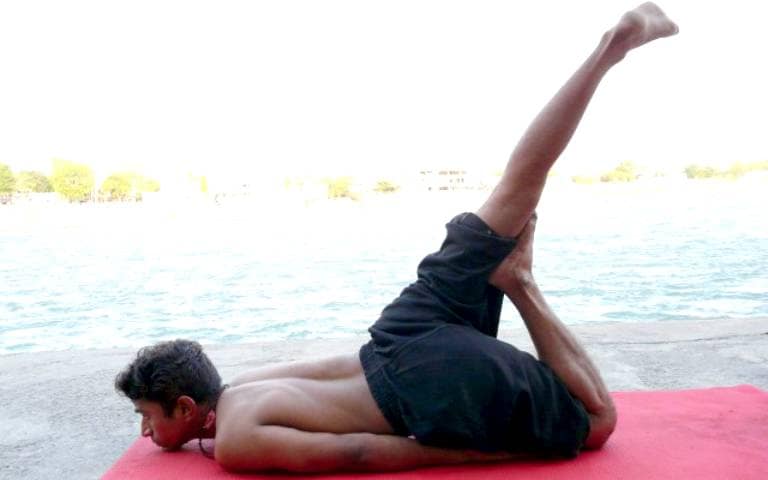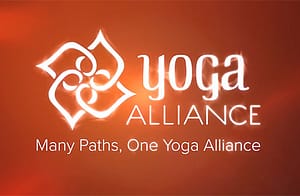Salabhasana
Table of Contents
Salabhasana
Salabhasana, or Locust pose, originated from a great yogi named Shalabh, who revealed this posture to alleviate back problems. It is an intermediate-level asana practised after lying on the stomach.
Salabhasana should be practiced on an empty stomach. Therefore, we briefly practice Salabhasana during our Yoga Teacher Training Programmes and Yoga Retreats.
In yoga therapy, the locust pose is one of the essential asanas for working on the pelvis and lumbar areas. Salabhasana is highly recommended for strengthening the lower back.
After having complete command over this pose, a yogi may enter to attain the master level of practising Purna Salabhasana.
Salabhasana Steps
Salabhasana is a magnificent posture for beginners who want to begin their yoga practice. It de-stresses the lumbar part and aligns the spinal cord.
A beginner may start to learn this pose with a daily routine and should practice it in two ways:-
Method One:
Please lie down on your belly, straighten your legs, and place your palms facing up. Point your toes and keep your hands apart from your body.
- Please take a deep breath and lift one leg to a 60-degree angle.
- Keep the other leg’s foot underneath this leg to support the Sacrum.
- Try to hold your breath until your lungs allow you to exhale.
- Settle the Pelvis and lower back properly. Tighten the Hip region. Pressure should be on the shoulders.
- Slowly lower both legs to the floor with your exhalation.
Method Two:
This method is applied after lying in the prone position, with the hands placed under the thighs, both legs lifted, toes pointed, and buttocks squeezed.
- Take a deep breath and exhale. This will relax your body. At the same time, adjust your hands underneath your thighs.
- Deep inhale and lift both legs simultaneously. Prana should hold on for 30 seconds.
- Tighten your Gluteus and align your body; pressure will come on the shoulders.
- Release the pressure from your lower back and slowly place your legs on the ground.
- Please rest for a short time until your body is fully relaxed.

Benefits of the Locust pose
Shalbhasana is a counterpose to Bhujangasana. In Bhujangasana, the upper body is mainly used. It activates below the spinal area and becomes more flexible. There are the benefits of Shalbhasana which are as follows:-
- It circulates blood in the waist and lower body, stabilising the Pelvis.
- All the organs in the abdominal region are exercised with this Asana, which helps reduce excess fat from the abdomen.
- After practicing Salabhasana for some time, the leg muscles become strong, and the body parts develop good flexibility.
- A person suffering from Sciatica should practice this pose daily. Additionally, daily practice of the Locust pose can help alleviate this issue permanently.
- It supplies fresh oxygenated blood to the abdomen, Kidneys, Pancreas, and the big and small intestines.
- This posture helps the Adrenal glands function properly.
- Shalbhasana offers numerous benefits that strengthen the nerves in the hands, legs, and back.
- It activates the Urinary and Excretory systems to detoxify the body.
- Sala banana gives a beautiful shape to the physical body, becoming full of Tejas or shine.
- It excels at awakening the Mooladhara chakra and enhancing digestive fire.
Precautions for Shalbhasana
- People suffering from slipped disks or lower back problems should avoid them.
- It is also advisable not to practice for those suffering from heart problems or abdominal surgeries.
- If there is any surgery related to the hip, the pelvis region should not be attempted without the supervision of a registered yoga teacher.
- Sala bhasana should not be attempted if you feel joint pain.
Note: Please look at our YouTube channel, Yoga with Indian Yogi, for videos on traditional yoga practices, Ashtanga yoga, Hatha Yoga, Pranayama, Meditation, Nauli Kriya, and yoga Therapy.
Tags:




